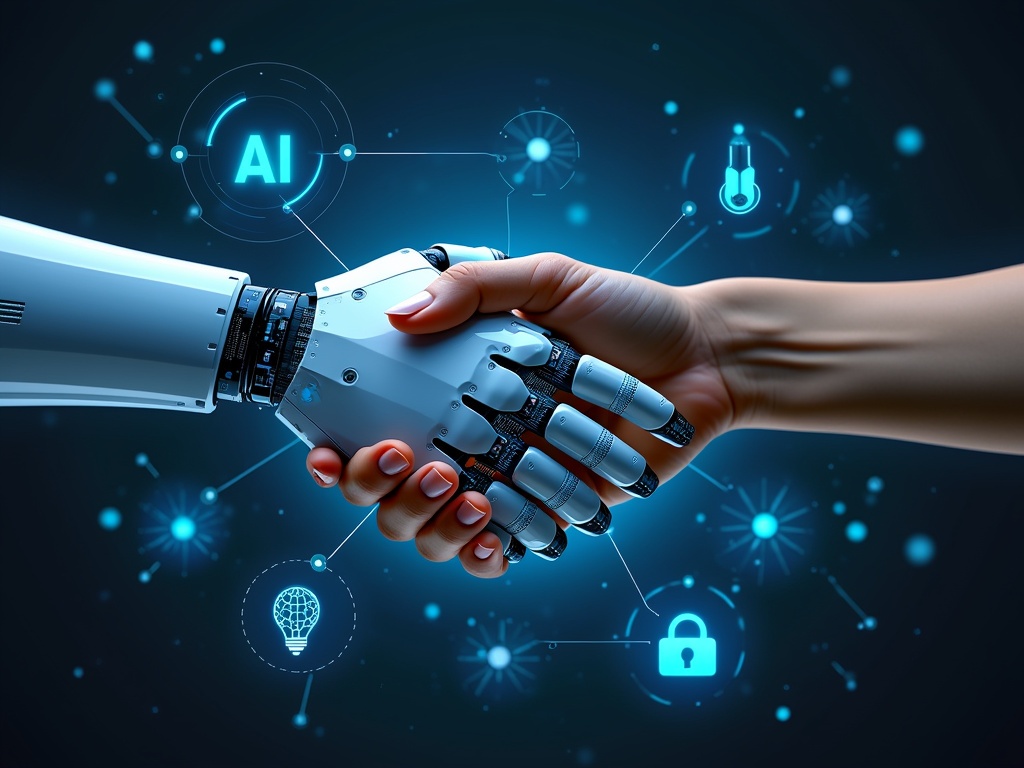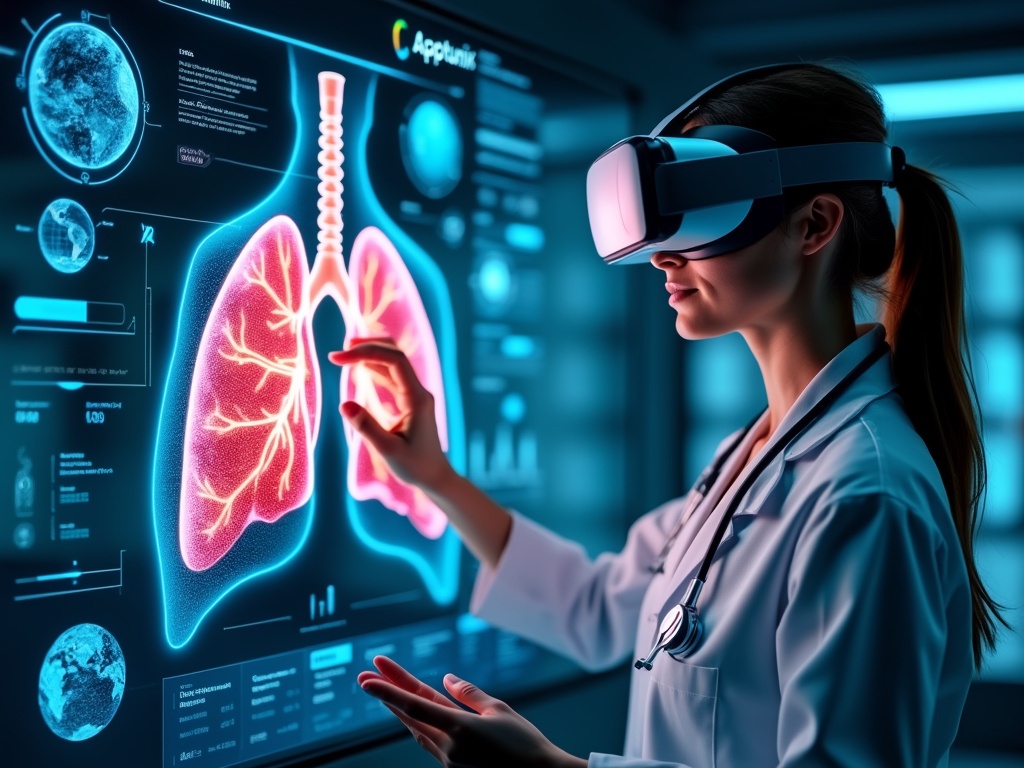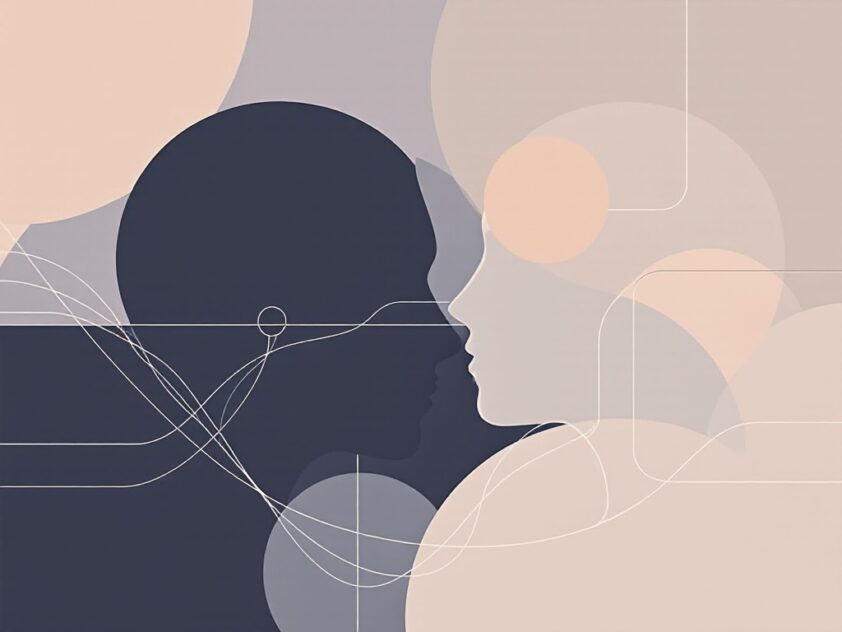The next frontier of technological innovation isn’t about replacing humans with machines. It’s about discovering how humans and AI can work together in powerful new ways. Across industries, groundbreaking case studies reveal how this collaboration is transforming everything from healthcare diagnostics to creative expression.
While AI excels at processing vast amounts of data and identifying patterns, humans bring irreplaceable qualities like emotional intelligence, ethical judgment, and creative problem-solving. When these complementary strengths merge, the results can be extraordinary. In healthcare, AI assists doctors in analyzing medical images while physicians provide the crucial human element of patient care. In education, intelligent tutoring systems adapt to each student’s needs while teachers offer guidance and emotional support.
The creative industries showcase perhaps the most fascinating examples of human-AI symbiosis. Artists are discovering how AI can augment their creative process, suggesting novel directions while the human artist maintains creative control and artistic vision. These collaborations challenge our assumptions about creativity and push the boundaries of what’s possible when human ingenuity meets machine intelligence.
Understanding these real-world case studies isn’t just academically interesting; it’s crucial for anyone wanting to stay ahead in their industry. The most successful implementations of AI don’t aim to replace human workers but rather to enhance their capabilities in meaningful ways. This shift represents a fundamental change in how we think about automation and technological progress.
By examining diverse examples across sectors, we’ll uncover key principles for effective human-AI collaboration and see how different industries are navigating this new frontier. From improving diagnostic accuracy in medicine to personalizing education at scale, these partnerships between human and artificial intelligence are showing us a glimpse of what the future of work might look like.
Understanding Human-AI Collaboration

Human-AI collaboration represents a powerful fusion of human cognitive capabilities with artificial intelligence’s computational strengths. This partnership leverages human skills like creativity, contextual understanding, and ethical judgment alongside AI’s ability to process vast amounts of data and identify complex patterns. When implemented thoughtfully, this collaboration enables both humans and AI systems to enhance each other’s capabilities rather than competing.
At its core, human-AI collaboration involves joint effort between humans and artificial intelligence systems working toward shared goals. For example, in healthcare, radiologists partner with AI imaging systems to improve cancer detection rates. The AI rapidly analyzes medical scans to flag potential issues, while human doctors apply their expertise and judgment to make final diagnostic decisions. This complementary approach leads to better accuracy than either party working alone.
There are several distinct modes of human-AI collaboration, each suited for different contexts. In AI-centric collaboration, the AI system takes the lead in processing and analysis while humans provide oversight and course-correction. The human-centric mode puts humans in the driver’s seat, using AI as a sophisticated tool to augment their capabilities. The most advanced form is symbiotic collaboration, where humans and AI work as equal partners, dynamically sharing responsibilities based on their respective strengths.
This collaborative approach offers numerous benefits across industries. In financial services, AI assists human analysts in processing market data and identifying trading opportunities, while human experts apply their understanding of broader economic factors and risk assessment. In creative fields, AI can generate initial concepts or variations while human artists and designers curate and refine the output, leading to innovative new possibilities.
The success of human-AI collaboration depends heavily on thoughtful implementation. Organizations must carefully consider how to allocate tasks between human and AI team members, establish clear communication channels, and ensure both parties can effectively complement each other’s capabilities. This includes providing appropriate training for humans to work with AI systems and designing AI interfaces that facilitate natural interaction.
When humans do not know where they step in, trust in the system dies. And when machines do not know when to stop, damage spreads fast.
– Thomas Franklin, CEO & Blockchain Security Specialist, Swapped
Case Study: Human-AI Collaboration in Healthcare

Healthcare professional using VR for lung analysis.
The transformative power of human-AI collaboration is evident in modern healthcare settings, where artificial intelligence augments medical expertise. At the forefront of this integration is AI in magnetic resonance imaging (MRI), where deep learning algorithms enhance diagnostic accuracy and processing efficiency.
Consider radiologists collaborating with AI systems to analyze brain MRI scans. These AI assistants rapidly process complex imaging data, highlighting potential abnormalities and providing preliminary assessments. This partnership allows medical professionals to focus on critical aspects of diagnosis while reducing human error from fatigue or oversight.
The impact extends beyond speed and accuracy. In personalized treatment planning, AI systems analyze vast databases of patient outcomes to suggest customized therapeutic approaches. Oncologists leverage AI insights to develop targeted treatment strategies based on individual patient characteristics, historical data, and predicted response patterns.
This synergy is remarkable in real-time clinical settings. Emergency departments with AI-assisted diagnostic tools can rapidly triage patients, enabling faster intervention in critical cases. The AI system processes incoming patient data, including imaging results, while healthcare providers apply their clinical judgment and emotional intelligence.
The success of human-AI collaboration in healthcare isn’t merely about technological capability. It’s about thoughtful integration that respects both machine efficiency and human expertise. Medical professionals who embrace AI partnerships report increased confidence in their diagnoses and more time for meaningful patient interaction, showing how technology can enhance the human element of healthcare.
The future of this collaboration appears promising. As AI systems continue to learn from each interaction, their ability to support medical decision-making grows more sophisticated. The goal remains to amplify human capabilities, creating a healthcare environment where technology and human insight work in harmony for better patient outcomes.
The integration of AI in healthcare isn’t about replacing human judgment—it’s about enhancing it. When physicians and AI systems work together, we see faster diagnoses, fewer errors, and more personalized treatment plans.
– Dr. Michael Strzelecki, Medical Imaging Expert
Case Study: Enhancing Education with AI Tutors
Recent research reveals remarkable success in using Intelligent Tutoring Systems (ITS) to improve student learning outcomes. In a comprehensive study spanning multiple educational institutions, Craig et al. found that students using AI tutoring systems showed significant academic performance gains, with improvements of up to 15 percentile points compared to traditional instruction methods.
The key to this success lies in the personalized learning experience that AI tutors provide. Rather than following a one-size-fits-all approach, these systems adapt to each student’s individual pace and learning style. For example, when working with mathematics concepts, the systems can identify specific areas where a student struggles and automatically adjust the difficulty level and presentation of material.
A particularly compelling case comes from AutoTutor, a widely-implemented ITS that engages students in natural language conversations about complex topics. Using sophisticated dialogue moves, AutoTutor guides learners through concepts step-by-step, providing immediate feedback and gentle correction when needed. This personalized guidance helps students develop deeper understanding while maintaining engagement.
The impact extends beyond just test scores. Studies show that AI tutors can reduce teacher workload while improving student motivation. This allows educators to shift their focus from routine instruction to providing higher-level guidance and support. Teachers report having more time to explain complex concepts and elaborate on student mistakes rather than just checking problem correctness.
The intelligent tutoring systems result in significant learning improvements, suggesting that the tutoring systems can be used as an effective learning guide to complement classroom instruction.
Wang et al., 2023
However, it’s important to note that AI tutors work best as a complement to human teachers, not a replacement. The most effective implementations blend machine intelligence with human expertise. This hybrid approach combines the tireless patience and consistency of AI with the nuanced understanding and emotional intelligence that only human educators can provide.
| Aspect | AI Tutors | Traditional Tutors |
|---|---|---|
| Personalization | Advanced algorithms create highly personalized learning experiences | Personalized learning based on direct interaction and observation |
| Availability and Flexibility | 24/7 availability, flexible scheduling | Limited by tutor availability and potential scheduling conflicts |
| Cost-Effectiveness | More affordable due to scalability and reduced overheads | Higher costs due to one-on-one sessions and additional expenses |
| Consistency and Quality | Consistent quality and methodology with continuous updates | Varies depending on the tutor’s experience and methodology |
| Feedback and Progress Tracking | Instant feedback and detailed progress reports using data analytics | Immediate verbal feedback, manual record-keeping for progress tracking |
| Engagement and Interactivity | Interactive multimedia tools, gamification, and dynamic content | Interactive with real-time adaptation based on student reactions |
Creative Industries: AI as a Collaborative Artist
The art world is witnessing a fascinating transformation as artificial intelligence emerges as a creative partner rather than a replacement for human artists. In studios and galleries across the globe, AI tools are becoming an integral part of the artistic toolkit, sparking new forms of creative expression and pushing the boundaries of what’s possible in visual design.
I think of AI as a collaborative partner – let it surprise you with new possibilities, but don’t hesitate to course-correct when it strays from your creative goals.
– Sandro Kratz, Founder, Tutorbase
Consider the case of Emily, a visual artist who collaborated with Google’s DeepDream to transform her traditional forest paintings. Through this partnership, she transformed serene woodland scenes into kaleidoscopic masterpieces, where AI-generated patterns merged seamlessly with her distinctive brushwork. The result wasn’t just a painting – it was a conversation between human emotion and machine learning.
In digital design, AI is reshaping how artists approach their initial creative process. Rather than starting with a blank canvas, designers are using AI as a springboard for ideation. Art studios are discovering that AI tools can generate countless variations of concepts in minutes, allowing artists to explore creative directions they might never have considered otherwise.
The integration of AI in artistic workflows has led to surprising efficiency gains. Tasks that once consumed hours of an artist’s time – like generating multiple color palettes or creating basic sketches – can now be accomplished in moments. This shift doesn’t diminish the artist’s role; instead, it frees them to focus on the aspects of creation that require human insight and emotional depth.
It’s crucial to understand that AI serves as an enhancer rather than a replacement for human creativity. As one art studio found, the most successful projects emerge when AI is used thoughtfully as part of the creative process, with human artists retaining control over the final artistic decisions. The technology excels at generating options and variations, but it’s the human artist who curates, refines, and infuses the work with meaning.
The transformational potential of artificial intelligence within the artistic domain is not about replacing the artist’s touch but rather enhancing it.
– Andres Fortino, NYU School of Professional Studies
The future of AI in creative industries points toward even more sophisticated collaborations. Artists are already exploring ways to train AI models on their own artistic styles, creating personalized tools that complement their creative vision while maintaining their unique artistic voice. This synergy between human creativity and artificial intelligence is opening new avenues for artistic expression that were unimaginable just a few years ago.
Overcoming Challenges in Human-AI Collaboration
Organizations embracing human-AI collaboration face significant hurdles that can impact the effectiveness and fairness of these partnerships. Understanding and addressing these challenges is crucial for realizing the full potential of human-AI teams.
One of the most pressing challenges is algorithmic bias. According to recent research, humans tend to exhibit automation bias—favoring AI recommendations even when they conflict with correct human decisions. This can reinforce existing biases rather than leveraging the complementary strengths of both human and machine intelligence.
I’ve found that rotating human oversight responsibilities prevents “automation blindness” where teams stop questioning AI decisions.
– Jason Levine, NREMT, Senior Technical Analyst, Ease Local
Integration issues present another significant barrier, particularly when incorporating AI systems into established workflows and infrastructure. Organizations often struggle with data compatibility, system architecture modifications, and ensuring seamless interaction between AI tools and existing processes. This technical complexity can create friction points that reduce the effectiveness of human-AI collaboration.
I’ve seen projects fail because teams didn’t properly map out how humans and AI would actually work together day-to-day
– John Cheng, CEO, PlayAbly.AI
The human element itself poses unique challenges. Many professionals experience anxiety or resistance when working alongside AI systems, often stemming from concerns about job security or a lack of trust in AI recommendations. Additionally, there’s a risk of over-reliance on AI, where humans may become too dependent on automated suggestions and gradually lose their decision-making capabilities.
However, several promising solutions are emerging to address these challenges. Organizations can mitigate algorithmic bias through regular auditing of AI systems, diverse training data, and implementing fairness constraints in AI models. Some companies are adopting “human-in-the-loop” approaches, where AI serves as a decision support tool rather than an autonomous decision-maker.
Technical Solutions and Best Practices
To overcome integration challenges, organizations should prioritize scalable and flexible AI architectures that can adapt to existing systems. This includes investing in robust data management practices, establishing clear protocols for AI-human interaction, and ensuring adequate technical infrastructure to support collaborative workflows.
Training and change management play crucial roles in successful human-AI collaboration. Companies should invest in comprehensive training programs that help employees understand both the capabilities and limitations of AI systems. This includes developing skills in critical evaluation of AI recommendations and maintaining human expertise alongside AI assistance.
Transparency and explainability in AI systems can help build trust and facilitate better collaboration. When humans understand how AI reaches its conclusions, they are better equipped to evaluate and complement these recommendations with their own expertise and judgment.
If you want the bias out, get the algorithms in—but make sure humans remain actively engaged in the decision-making process.
– Andrew McAfee, MIT
Success in human-AI collaboration requires a balanced approach that leverages the strengths of both parties while actively addressing potential pitfalls. By implementing these solutions and maintaining a focus on continuous improvement, organizations can work toward more effective and equitable human-AI partnerships.
| Challenge | Solution |
|---|---|
| Algorithmic Bias | Regular auditing of AI systems, diverse training data, and implementing fairness constraints in AI models |
| Integration Issues | Prioritize scalable and flexible AI architectures, robust data management practices, and clear protocols for AI-human interaction |
| Human Resistance and Anxiety | Comprehensive training programs, transparency, and explainability in AI systems |
| Over-reliance on AI | Develop skills in critical evaluation of AI recommendations and maintaining human expertise alongside AI assistance |
Conclusion: The Future of Human-AI Collaboration
The collaborative potential between humans and artificial intelligence stands at a transformative threshold. Rather than replacing human workers, AI is emerging as a powerful complement to human capabilities, with each bringing unique strengths to the partnership. While AI excels at processing vast amounts of data and automating repetitive tasks, humans continue to lead in areas requiring emotional intelligence, ethical judgment, and creative problem-solving.
Recent research from Harvard Business Review indicates that companies achieve their most significant performance improvements when humans and smart machines work together, enhancing each other’s strengths. This symbiotic relationship allows organizations to scale operations while maintaining the critical human elements of innovation and strategic thinking.
The next wave of advancement will likely see AI systems becoming more sophisticated in their ability to understand and respond to human needs. Platforms like SmythOS are pioneering this evolution by enabling the creation of specialized AI agents that can work alongside human teams, handling everything from data processing to routine customer interactions while preserving human oversight of critical decisions.
Looking ahead, the key to successful human-AI collaboration lies in thoughtful integration that amplifies human potential rather than diminishing it. As organizations continue to explore this frontier, the focus must remain on developing frameworks that ensure AI systems align with human values and societal needs while driving unprecedented levels of productivity and innovation.
The future workplace will likely be characterized by ‘blended teams’ where human creativity and judgment work in harmony with AI’s computational power and efficiency. By embracing this collaborative approach, organizations can unlock new possibilities for growth while ensuring that technology serves its ultimate purpose: enhancing human capability and advancing societal progress.
